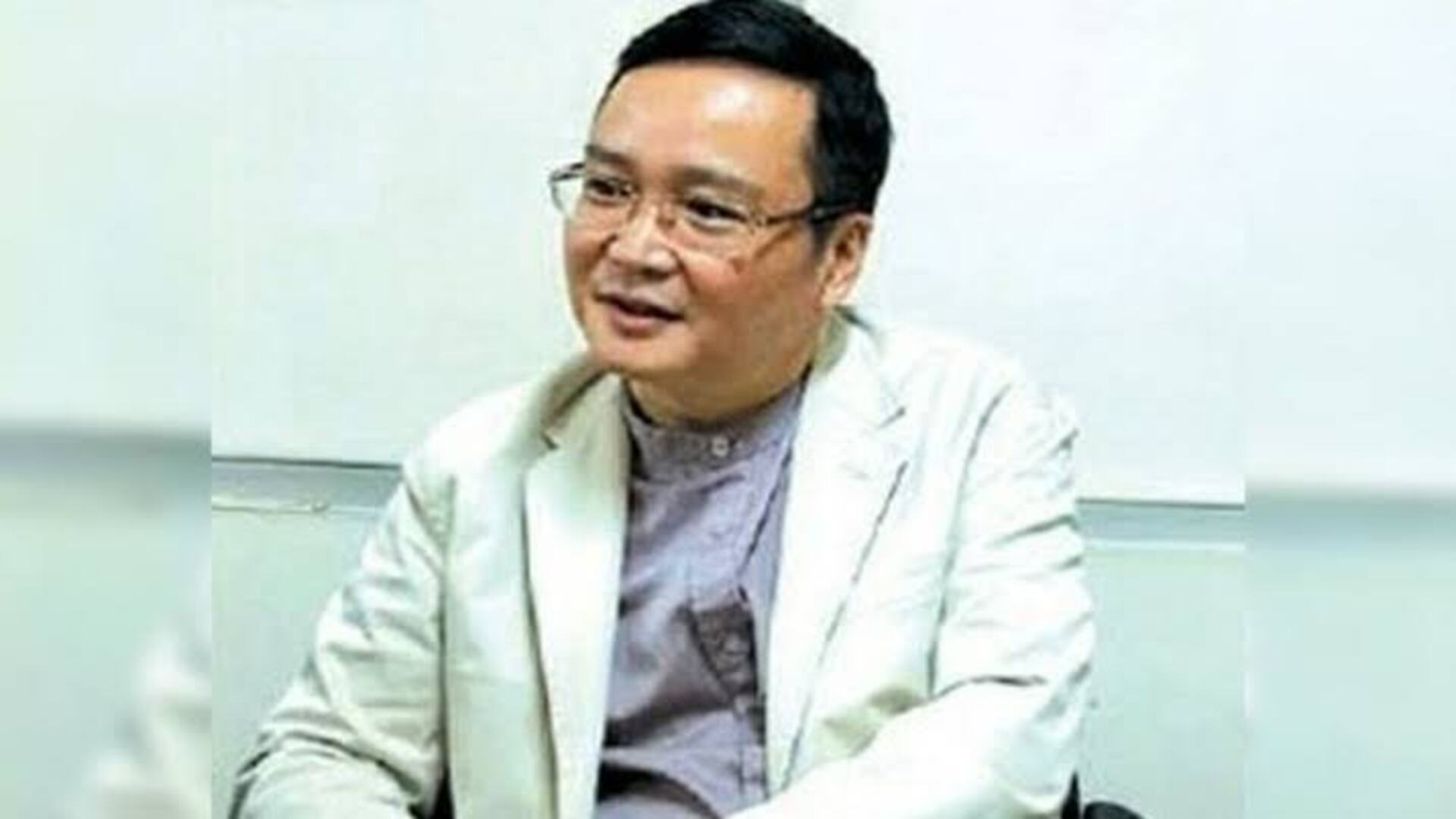
CPEC’ 10 years essay contest to help CPEC narrative out-and-out, says Zhao Shiren
April 6, 2023
4-day CPEC Punjab Media Delegation Initiative kicks off
August 2, 2023Since China is taking center stage and Central Asian states are making their marks on international and regional dynamics, first China-Central Asia Summit, being held from May 18-19, has set global interest afire.
World is buzzing with multi-dimensional undercurrents of China-Central Asia Summit as global leaders know very well snowballing impacts of “gathering” on fast changing geopolitical, geoeconomic and geostrategic landscapes.
Chinese President Xi Jinping will chair the China-Central Asia Summit, in Xi’an in northwest China’s Shaanxi Province, starting point of ancient Silk Road.
With Likely thrust on wide-ranging agenda, including political, economic, security and people-to-people exchange, economic cooperation in energy, agriculture, green economy and other sectors, the Summit will hash out comprehensive alignments of partnerships and deeper collaboration with five Central Asian nations on challenges as well as Belt and Road Initiative.
It will also be categoric message to anti-globalization forces that future does not lie in decoupling and protectionism rather shared future is key to forge ahead in Central Asia and other parts of world.
That is why “apex meeting” will inject new impetus into development agenda not only for Central Asian countries but also for supercontinent “Eurasia”. Central Asian states sit at heart of Eurasia which is home to three of the world’s most sophisticated and advanced economic regions and where 75 percent of the world’s population lives in. Eurasia possesses “three-fourths of the world’s energy resources”. The location of Central Asia has made it a “strategic pivot” on economic, political, social, cultural and security perspective.
Region of Central Asian states lack high-tech economic structure to keep pace the world. The Summit is likely to usher in an era of fresh launch of macro and micro projects (roads, railroads, pipelines, industrial parks, and special economic zones) that would improve connectivity between China and Europe via the Central Asian region.
Through Chinese prism, the Summit is believed to unlock those areas of cooperation that are still untapped and undiscovered for cultivating joint ventures on inclusive economy, peace and security. Central Asia is in an unenviable position of being a key pillar in China’s BRI. Experts are of a view that Central Asia as one of the pillars of its Silk Road Economic Belt (SREB), thanks to the region’s abundant natural resources and position along the overland route to European markets that circumvents the maritime “Malacca challenges.”
Meanwhile security challenges are matter of concern. The shocks and aftershocks of multiple and overlapping crises—including crisis in Afghanistan and Ukraine—continue to shake the Central Asian region and its economies. Given the untoward businesses amidst these external shocks, impacts of climate change, record high inflation, unilateralism and challenges in post-Covid era, the Summit is believed to be putting sharp focus over the security dynamics and spillover effects in Central Asia as well as China.
Last month, State Councilor and Foreign Minister Qin Gang chaired the fourth China-Central Asia Foreign Ministers’ Meeting in Xi’an and underlined the need to expand security collaboration because of new risks and challenges in the region, especially the chaos caused by U.S.’ clumsy and hasty withdrawal from Afghanistan. Their need for security cooperation has always been existing and is increasing now to nip terrorism, extremism and separatism.
China’s economic and trade cooperation with the five Central Asian countries has produced noticeable results since the establishment of diplomatic ties more than 30 years ago. China’s trade with five Central Asian countries surged 37.4 percent year on year in the first four months of 2023, the General Administration of Customs revealed.
The bilateral trade volume witnessed a 40-percent growth from a year ago. It saw a strong development momentum, and recorded a year-on-year expansion of 22 percent in the first quarter of this year. Last year, China’s imports of agricultural, energy and mineral products from the five countries jumped over 50 percent from a year earlier, while exports of mechanical and electronic products to them increased by 42 percent. Investment cooperation has also benefited all sides. As of the end of March 2023, China’s direct investment stock in the five Central Asian countries stood at over $15 billion. The cumulative turnover of completed projects reached $63.9 billion.
A batch of cooperation projects have been launched in the fields of infrastructure, oil and gas exploration, manufacturing, medical and health care, education, technology and the digital economy. China and all the five Central Asian countries have signed cooperation documents on the joint construction of the Belt and Road Initiative. There are some landmark projects, such as the Horgos International Border Cooperation Center and China-Central Asia gas pipeline.
Running through Turkmenistan, Uzbekistan and Kazakhstan, the China-Central Asia gas pipeline is China’s first transnational gas pipeline. By the end of 2022, the pipeline had delivered a total of 423.2 billion cubic meters of natural gas to China since it began operation in 2009. The pipeline has effectively promoted the social and economic development of countries along the route, and played an important role in the diversification of China’s energy imports and the improvement of domestic energy consumption structure. The assembly center of China-Europe Railway Express in Xi’an has 17 mainlines from the city to Central Asia countries, which has become the golden channel for two-way logistics in China and Central Asia.
Although China and C-5 are working in cohesion in all sectors but one of the areas that needs urgent consideration is green financing, green energy and green economy. Due to climate change and carbon-based energy sources, Central Asia is already highly vulnerable to natural disasters. In the past three decades alone, the region has experienced 500 floods and earthquakes, impacting 25 million people, and causing $80 billion in damages. Global warming is accelerating the melting of Central Asia’s glaciers, which play a vital role in the region’s water and ecosystem balance. The glaciers in Central Asia have receded by 25 percent in the last fifty years – with an equal amount expected to disappear in the next two decades.
The lack of financing is a serious obstacle to “greening” the region’s economies and conserving and restoring natural wealth. The region possesses an estimated 5 percent of the world’s natural capacity for wind and solar energy capture, yet much of this potential has yet to be unlocked. The World Bank estimates that investments of at least $20 billion would be needed to expand Central Asia’s renewable energy infrastructure.
China is keen to pass on all dividends of President Xi’s fresh gifts “Global Development Initiative”, “Global Security Initiative” and “Global Civilization Initiative” to the world and developing nations especially Central Asian states.
Already China showing its responsibility develops security cooperation with the countries in the region on a bilateral level. In August 2021, following the U.S.’ announcement of withdrawal from Afghanistan, China and Tajikistan jointly held a counter-terrorism exercise to cope with the growing threat posed by terrorist groups that were migrating towards Afghanistan’s northern region, which borders both China and Tajikistan. It is also good omen that leaders of Central Asian countries have clear understanding about China engagement in the region. While commenting on views that China’s growing presence in Central Asia may disrupt the regional geopolitical balance during a media interview, Kazakhstan President Kassym-Jomart Tokayev said that such concerns are unnecessary because intentions of China-Central Asia cooperation are “open and sincere”.
Unveiled by President Xi Jinping in a speech at the UN General Assembly in September 2021, the Global Development Initiative outlines China’s vision to be a leader in global development efforts. The initiative aims to support developing countries in poverty alleviation, public health, and other issues.
China has vowed to enhance communication with Central Asian countries, helping them address multiple shared challenges, said spokesperson Shu Jueting from China’s Ministry of Commerce in January 2022. Shu emphasized multiple areas of partnership including poverty reduction, pandemic prevention, grain security and development financing, during a press conference held at the ministry, and vowed to push forward with more bilateral infrastructure projects working together with Uzbekistan, Kazakhstan, Tajikistan, Kyrgyzstan and Turkmenistan.
Yasir Habib Khan, founder and president of the Institute of International Relations and Media Research in Pakistan


